Main challenges and solutions for implementing agile methodologies in marketing
October 11, 2024

Have you ever wondered how you can apply agile methodologies to a marketing team? While the “agile” concept originated in the world of software development, more and more marketing teams are adopting this approach to improve collaboration, speed, and results. But, like any change, it comes with some challenges. Today, we’re going to explore the main challenges of implementing agile methodologies in marketing and, of course, how to solve them. Let’s dive in!
1. Resistance to change: how to foster an agile culture in marketing teams
One of the first obstacles you’ll encounter when implementing an agile methodology is resistance to change. Marketing teams, used to working on long, creative campaigns with flexible deadlines, may see agility as a challenge to their creative freedom.
Challenge: shifting mindset
Resistance often arises because agility demands more planning, tracking, and constant delivery. Many marketing professionals might feel that this takes away time for creativity and that agile processes limit their ability to explore new ideas.
Solution: foster a culture of continuous improvement
The key here is to make the entire team see the benefits. Agile teams aren’t rigid; quite the opposite. The focus is on continuous improvement, optimizing processes so that the team becomes more efficient without losing creativity.
- Clear communication: Organize meetings to thoroughly explain the benefits of agile methodology. Emphasize that the goal is to improve how they work, not to stifle creative freedom.
- Training and workshops: Offer workshops and training on agility, so everyone feels comfortable with the concepts and tools.
- Celebrate small wins: Implement the methodology in smaller projects and celebrate the results. Seeing tangible progress is a great way to get the team excited.
Fostering an agile culture isn’t an overnight task, but with patience and best practices, you can shift your marketing team’s mindset.


2. Balancing creativity and agility in marketing projects
Marketing is, by nature, a creative job. Creating campaigns that are compelling, memorable, and effective doesn’t always fit into a two-week sprint, right? So, how do you balance creativity and agility?
Challenge: fear of losing creativity to meet deadlines
Marketing teams often worry that agile methodologies will impose short, pressing deadlines on their creativity. A brilliant campaign isn’t created in 48 hours, and this is where many teams feel agility could be a hindrance rather than a help.
Solution: Flexibility Within the Agile Framework
The trick is to adapt agile methodologies to the needs of marketing, not the other way around. You don’t have to be completely rigid with timing.
- Longer or adjusted sprints: Unlike development teams, marketing teams may need longer sprints (three to four weeks) to allow creativity to flourish while staying agile.
- Creative phases: Within the agile process, reserve time for the purely creative phase. When creating an agile schedule, ensure brainstorming and creative exploration have their place before execution begins.
- Continuous idea improvement: You don’t have to wait until a campaign is fully finished to test it. You can launch early versions, measure results, and iterate based on data and feedback. This way, you preserve the creative essence but with the advantage of agile feedback.
Balancing agility and creativity is one of the biggest challenges, but once you find it, you’ll see your campaigns flow faster without sacrificing originality.
3. Metrics and evaluating success with agile methodologies in marketing
One of the most powerful aspects of agile methodologies is continuous measurement. However, in marketing, it’s not always easy to evaluate success in short timeframes, especially when campaign results can take weeks or months to show.
Challenge: difficulty in measuring short-term impact
In an agile environment, constant measurement is encouraged to adjust quickly. In marketing, measuring the real impact of a campaign can be tricky, as the most valuable results (like increased sales or long-term engagement) can take longer to appear.
Solution: define clear metrics and short-term goals
The key is to combine immediate results metrics with long-term indicators. Here are some ideas to make agility compatible with evaluating success in marketing:
- Set clear, specific KPIs for each sprint: For example, instead of waiting to measure the total impact of a campaign, evaluate intermediate metrics in each sprint, such as email open rates, social media reach, or interactions in an initial phase.
- Continuous review and feedback: Agile teams review and adjust strategies based on the results of each sprint. If in a campaign certain ads aren’t generating enough interaction, you can change the focus before the whole project is complete.
- Long-term conversion metrics: While agile methodologies focus on incremental progress, you should also set long-term success indicators. This way, you can measure the impact of your agile efforts on campaigns that take longer to bear fruit.
The trick is not to rely solely on immediate metrics, but to balance what can be measured in real-time with the final results that take longer to appear.
Conclusion: can agile methodologies be applied to marketing?
Absolutely! While marketing and agility may seem like different worlds, the reality is that they complement each other more than you might think. Sure, there are challenges like resistance to change, balancing creativity and agility, and measuring success, but all of these barriers have practical solutions.
Implementing an agile methodology in marketing might be just what your team needs to improve efficiency, collaboration, and deliver results in less time. With an approach tailored to your team’s creative needs and a culture of continuous improvement, agile methodologies can empower, rather than limit, the creativity and outcomes of your campaigns.
So, if you were hesitating to take the leap into agile marketing, now is the time!




